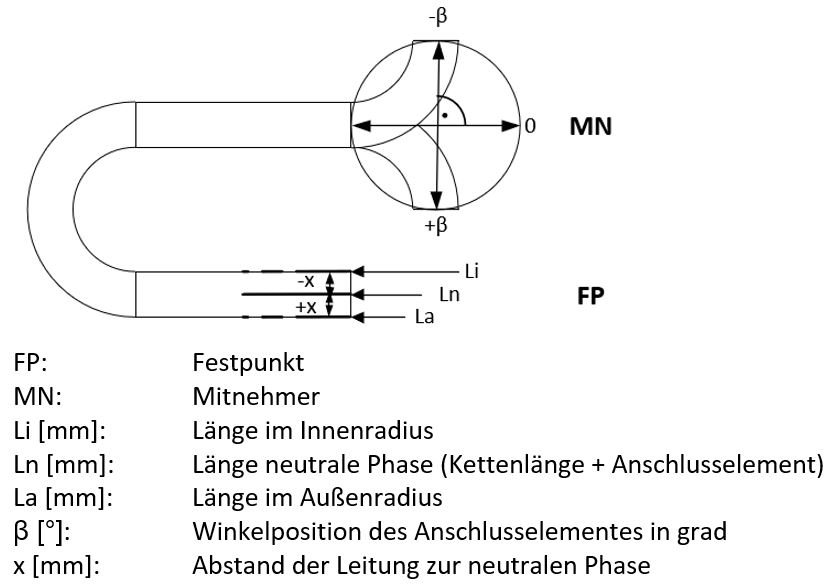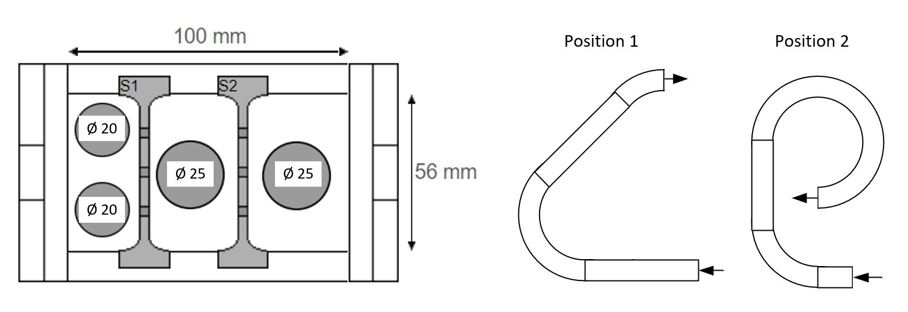What does relative motion in a chain mean?
Volker Beissel | 7. April 2020
Discussions of strain relief frequently include references to relative motion. Consideration of this motion is the basis for optimum strain relief.
If a cable is on the energy supply’s neutral axis, the cable length is the indicated chain length. However, there is often one cable in the inner radius and one in the outer radius of a chain. The cable in the energy chain’s inner radius is then shorter than the one in the outer radius.
If an e-chain is filled when it is lying straight, all cable lengths in the chain are still the same as the chain length. As soon as it is put into its installation orientation, however, the necessary inner and outer radius cable lengths change relative to the chain length. If this is a one-time process and the chain moves only linearly thereafter, all cables remain in the same place, and there is no further relative motion. For this reason, strain relief on both sides should be employed only when the chain is in its end position.
But if the orientation of the mounting brackets to one another is dynamic, as it is in a rotating application, for instance, the cables move continuously relative to the chain outside the neutral axis.
Relative motion is calculated as follows:

The length of the cable in the U-shaped chain:

Relative cable motion when the mounting brackets change orientation relative to one another:

Example
For a four-metre E4.56.10.200.0 e-chain with the following bed filling and the end positions indicated, the two cables undergo motion relative to the chain in a chamber. The inner cable moves 56.55mm out of the chain, and the outer cable moves 56.55mm into it. This means that the cable motion relative to the chain is 56.55mm, and the relative motion of the cables to each other is 113.1mm. The cables, which lie individually, can move along the neutral axis, where they have no relative motion.



